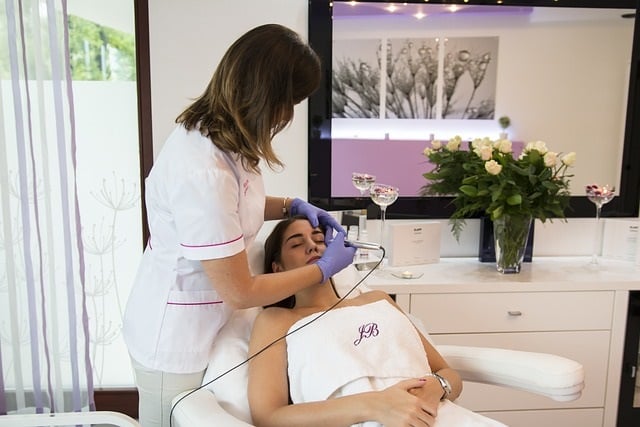Skin Oxidation, The Complete Guide!
One day, Laila, a middle school teacher, was experiencing a lack of radiance in her skin despite using traditional skincare products. After regularly using a serum containing vitamins C and E for three months, she noticed a significant change: Her skin was more radiant and radiant, some of the fine wrinkles that had been bothering her disappeared, and she felt as if she had regained her youth. Also on her own, Noura, also from Dubai, works for a large contracting company and had previously been on a nutrient-poor diet. But after making simple changes like increasing her intake of colorful fruits and vegetables—which are rich sources of antioxidants—she began to notice a reduction in the appearance of dark spots and wrinkles. Even her friends noticed the difference in her radiant complexion.
These real-life stories are living testament to the power of antioxidants to rejuvenate skin and protect it from damage caused by daily environmental factors. These are not just passing experiences, but success stories that every woman can emulate to give her skin the opportunity to regain its youthful, radiant glow through a simple, comprehensive skincare routine.
With the fast-paced pace of modern lifestyles and increased exposure to harsh environmental factors, skin is vulnerable to oxidation, which negatively impacts its appearance and health. In this article, we explore the concept of skin oxidation, its causes, and the signs that indicate its occurrence. We then move on to prevention and treatment methods, highlighting the vital role of antioxidants in cell renewal and delaying the appearance of signs of aging.
What is the concept of skin oxidation?
Skin oxidation is a chemical process that occurs when skin components react with free radicals, unstable molecules produced naturally during metabolism or as a result of exposure to external factors such as sunlight and pollution. This process damages skin cells, leading to loss of radiance and elasticity, wrinkles, dark spots, and inflammation, which can sometimes be accompanied by more serious conditions such as skin allergies.
This process can be likened to the "corrosion of iron." Just as iron rusts when exposed to moisture and oxygen, skin cells are damaged when they interact with free radicals in conditions of imbalance with the body's natural antioxidants.
Causes and factors leading to skin oxidation
There are many causes of skin oxidation, most of which are the result of exposure to both external and internal factors, including:
Sun and UV exposure : UV rays are among the most prominent factors that stimulate the formation of free radicals in the skin. Excessive sun exposure without adequate protection damages collagen and elastin, accelerating the skin aging process.
Environmental pollution: The presence of dust, pollutants, and chemicals in the air increases oxidative stress on the skin, as these compounds interact with skin cells and cause them to lose their natural radiance.
Smoking and bad habits: Cigarettes and tobacco products contain a range of harmful chemicals that increase the production of free radicals, causing damage to skin cells and accelerating the appearance of wrinkles and spots.
Stress and psychological tension: Chronic stress leads to the secretion of certain hormones (such as cortisol) that increase the effect of oxidative stress on the body, which will also negatively affect skin health.
Unbalanced diet: A lack of intake of foods rich in antioxidants and important vitamins such as vitamins C and E weakens the body's ability to combat free radicals, which contributes to accelerated skin oxidation.
Genetic factors: Genetic factors can play a role in determining the skin's susceptibility to oxidative damage. Aging also reduces the body's ability to produce natural antioxidants.
Common signs of skin oxidation
It is important to recognize the early signs that indicate the onset of skin oxidation, the most prominent of which are:
Appearance of wrinkles and fine lines: Wrinkles, especially around the eyes and mouth, appear over time as a result of collagen damage and decreased skin elasticity.
Loss of skin radiance: The skin becomes dull and lacks radiance, and its natural color may lose its luster.
Dark spots and pigmentation: This occurs due to increased melanin production as a defensive response to oxidative damage, leading to uneven skin tone.
Dry and cracked skin: People with affected skin experience dryness and small cracks that do not usually appear on healthy skin.
Irritation and redness: Skin oxidation can be accompanied by local inflammation and redness resulting from cell damage.
Prevention and treatment methods

There are several strategies that can be followed to prevent skin oxidation and treat its effects, including daily preventative measures, topical treatments, and advanced therapeutic steps.
Protecting your skin from the sun: Using appropriate sunscreen: Sunscreen is one of the most important steps in preventing skin oxidation. Choose a cream with an SPF of at least 30 that blocks UV rays. MIGUHARA Rose Collagene Tone Up UV Protector SPF50 is an excellent sunscreen that effectively protects your skin from the sun's rays.
Wear protective clothing: It is recommended to wear hats, sunglasses, and clothing that covers the most affected areas of the body when exposed to direct sunlight.
Eating a healthy diet: Eating foods rich in antioxidants is important. It's important to include colorful fruits and vegetables such as berries, oranges, spinach, and broccoli in your daily diet. These foods contain vitamins C and E and beta-carotene, which help protect the skin from free radicals.
Reduce your intake of processed foods and saturated fats: Eating fresh, nutrient-rich foods helps support normal body functions and reduce oxidative stress.
External skin care: Choosing the right skin care products. Use a gentle cleanser to cleanse the skin, such as MIGUHARA AC Pore Cleansing Foam , a toner to hydrate, and then a moisturizer containing antioxidants, such as vitamin C or E. An excellent example of a vitamin C moisturizer is MIGUHARA Vita Intensive Melatoning Cream 50ml . It is also recommended to use a serum containing retinol, which stimulates collagen production.
Using natural masks: Homemade masks can be prepared using natural ingredients such as green tea, honey, or oatmeal. They help rejuvenate and revitalize skin cells.
Stress management and relaxation techniques: Regularly practicing yoga or meditation helps reduce stress levels, which positively impacts skin health.
Adequate sleep: Sleep is an essential part of the skin cell renewal process, so make sure to get 7–8 hours of good sleep every day.
Advanced cosmetic treatments such as laser and chemical peels: Cosmetic treatments such as chemical peels, laser, and microneedling can be used to rejuvenate skin cells and remove damaged layers.
Stem cell therapy: Stem cell therapy techniques have become an innovative method for stimulating skin regeneration and repairing damaged skin.
Antioxidants and their effectiveness in treating skin oxidation: Antioxidants play a key role in treating skin oxidation; they work to neutralize free radicals and prevent them from causing further damage. They can be used in skincare products, whether in the form of serums or creams, where they can achieve positive results, such as:
Cell renewal: Antioxidants help speed up the renewal process of damaged cells, keeping the skin fresh.
Improve skin elasticity: By boosting collagen production, antioxidants improve skin elasticity and reduce the appearance of wrinkles.
Improve skin tone: These compounds even out skin tone and prevent pigmentation caused by prolonged exposure to UV rays and environmental factors.
Reduce inflammation: Antioxidants like niacinamide and green tea help reduce inflammation and redness in the skin, leaving it feeling comfortable and revitalized.
Numerous scientific studies have proven that incorporating antioxidants into your skincare routine improves the texture and overall appearance of your skin. Continued use, along with a healthy lifestyle, can help prevent the signs of premature aging.
Conclusion
Skin oxidation isn't just a natural process that's difficult to avoid; it's a daily challenge many face as a result of exposure to internal and external environmental factors. The effects of this process can be mitigated by adopting a comprehensive skincare regimen that includes sunscreen, a diet rich in antioxidants, and choosing skincare products that contain effective ingredients such as vitamin C, vitamin E, and retinol.
Adopting a healthy, balanced lifestyle contributes to protecting and rejuvenating the skin, helping it maintain its youthfulness and freshness over time. By implementing the aforementioned preventative and therapeutic steps, anyone who wants to combat the signs of aging can achieve fruitful results that boost their self-confidence and improve their quality of life.
The success of this process requires constant commitment and ongoing care. Simply using products is not enough; it must be part of a balanced lifestyle that includes mental well-being, proper nutrition, and attention to overall health.


